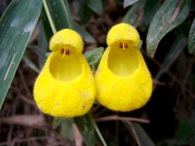Plants used by solitary bees
Plants used by alfalfa leaf-cutter beesAlfalfa leafcutter bees (Megachile rotundata) are solitary bees that feed primarily on alfalfa (Medicago sativa L.). Each female bee constructs her own nest by cutting pieces of leaves, folding them and overlapping them to make a cell. They place one egg and a pollen provision in each cell, cap it, an construct another cell until they finish the nest. The number of cells per nest is variable.
Using metabarcoding approaches, we aim to identify: (1) the plant species the bees are collecting pollen from to form the brood provisions, and (2) the plant species they are using for constructing their nests. |
Plants used by long-horned beesLong-horned bees (Melissodes spp.) are solitary bees that feed mostly on Asteraceae, especially sunflower species (Helianthus spp.). Melissodes are ground nesters; each female bee constructs her own nest.
Using metabarcoding approaches, we are looking into the range of plant species visited by two closely-related species: M. trinodis and M. agilis. |
Micromeria Benth. (Lamiaceae) in the Canary Islands
This project has several components:
Geological history and species diversificationTenerife used to be three islands in the late Miocene: Roque del Conde (11.6-3.5 Ma), Teno (6.7-4.5 Ma), and Anaga (6.5-3.6 Ma) that got secondarily connected by successive volcanic activity during the late Miocene-Pliocene until Tenerife got its current shape ca. 2 Ma.
Using a callibrated phylogeny and morphometric analyses we aim to understand the diversification process of the two groups of species of Micromeria present in Tenerife: the species restricted to the palaeo-islands of Anaga and Teno, and the species inhabiting the central, younger part of the island. Read more about this in our 2014 paper. More recently, we developed a set of 16 microsatellite markers to study how the geological history of Tenerife shaped the genetic structure of these species. Read more about this in our 2016 paper here. |
Inter-island colonization patternsThe Canary archipelago is composed of seven islands located 100 km off the coast of Morocco in the Atlantic Ocean. These islands are older in the east (Lanzarote and Fuerteventura, 15-20 Ma) and younger towards the west (El Hierro, 1 Ma).
Using phylogenetic inference we aim to determine the patterns of diversification and inter-island colonization of Micromeria in the Canary Islands. Read more about this in our 2015 paper. More recently, we assessed the influence that inter-island colonization, hybridization and gene-flow played in Micromeria diversification using microsatellites and a RAD sequencing approach we developed. |
Taxonomical revisionA revision of the species of Micromeria present in the Canary Islands and Madeira archipelagos is needed in order to reconcile the taxonomy of these species with new molecular evidence available.
Three papers were published describing new taxa and proposing the combination of several names. Available here, here, and here. Also, we proposed the conservation of the names Micromeria varia and M. hyssopifolia (available for download here). Unfortunately, this proposal was turned down so these taxa had to be renamed. |
Taxonomy of Calceolaria L. (Calceolariaceae)
This research has been mainly focused on:
Calceolaria from Peru |
Section Calceolaria and C. tripartita species complexSection Calceolaria is composed of hygrophytic herbs that usually present pinnatifid or pinnate leaves and stamens with dimorphic anther thecae.
During my master studies, I focused on a species complex within Section Calceolaria: the C. tripartita species complex. Read more about it here. I also worked on a revision of this Section present in Chile. See publication here. |
New speciesI have described several taxa of Calceolaria:
|
Proudly powered by Weebly








